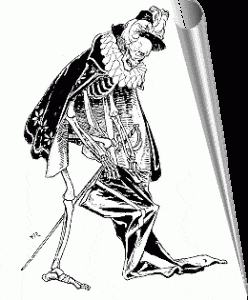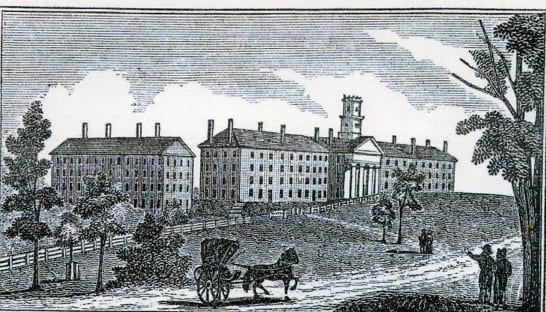It is a truth universally acknowledged… that I’m somewhat obsessed with the old course catalogs.
I could extol their data-rich virtues, their college-sanctioned information, the meta-layers of their presentation– but perhaps it’s simpler just to say that they’re awesome.
So it’s little surprise that the project I’m most excited about is a constellation of smaller projects on the changing academic environment of early Amherst, whose backbone is the esteemed collection of course catalogs and which runs tangentially to any inspection of the literary societies.
But I’ve spoken enough and stared at enough and spreadsheet-ed enough the course catalogs. Let’s talk about something else– the Archives.

There are myriad collections that could contribute to my constellation of projects. I’ve been combing the finding aids, and it’s almost overwhelming how many potential sources fling themselves at me when I open one.
Though I suppose I should be discerning in which documents I call to help contextualize my catalogs, there are so many delicious options that it’s hard to restrain myself. Here’s a taste of them:
In just the Amherst College Early History Manuscripts and Pamphlets Collection, we’ve got discontented students writing to President Moore about their dissatisfaction with the tutor Lucius Field, the faculty criticizing the “Social Union,” a literary society, for its hurtful anonymous compositions, and two score of the senior class trying to skive off the end of the semester by citing the president’s ill health. So we’ve got students expressing dissatisfaction with the administration and the administration expressing dissatisfaction with the students– a lovely example of the tension between the two.
The value of the Clubs and Society Collection, with its minutes and documents from the literary societies hardly need be mentioned here.
The Historical Manuscripts Collection has a wealth of student perspectives on learning. Some examples include an oration on “The Obligations of Genius to Common Minds,” a literary discussion asking “Are Works of Fiction Necessary to Give a Proper Cultivation of the Mind?”, an essay on the “Influence of Science on the Moral Improvement of Society,” an oration on “Motives to Intellectual Exertion,” and another oration on “Science and the Classics – Their Union the True Basis of a Professional Education.” All this, I should note, is just looking at the first twelfth of the collection.
In short, while I’ve been somewhat myopic in my focus on the catalogs, I’m excited now to take a landscape view, to dive back into the Archives and to situate my statistics within a larger story. For so long I’ve been championing my spreadsheets that I’d forgotten how valuable the anecdotal can be– I’m ready to remedy that.



